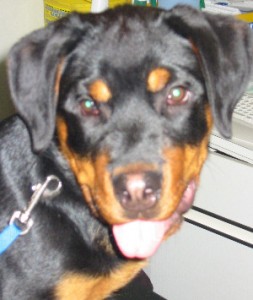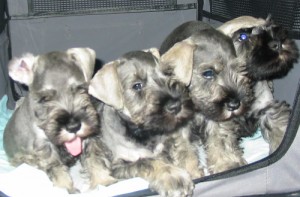Puppy training is essential for all, and time taken early on with the basics will go a long way to prevent behavioural problems developing later in adulthood.
- Remember that there are only two basic training techniques-
- reward for good behaviour, and
- being ignored if badly behaved.
- Always reward your puppy/ dog with verbal praise FIRST and a small treat such as a dog biscuit SECOND, for any good behaviour. It is important that you consistently keep this order so that the dog can learn that verbal praise is likely to be immediately followed with a treat. Treats should ONLY be given as rewards for good behaviour not just for being “cute and cuddly.”
- Over time you should start rewarding good behaviour with praise only sometimes, and do not give a treat every time, but this will only work if you have followed the guidance above regarding the order of rewards.
- You should still follow praise with treats often enough to make the good behaviour for praise only, worthwhile to your dog. The combination of praise plus treat , and praise only, for good behaviour is more effective as a training method than giving a treat every time.
- DO NOT shout or try to tell your dog off if badly behaved. They will think the attention they are getting is a reward, so your effort will be counter-productive.
- If your puppy or dog is badly behaved, they should be ignored, and you may want to put them out of the room, or if using a crate you could put them in the crate.
- Dogs behave like pack animals, and in any pack there will be a leader. The leader receives the most attention.
- As your puppy grows into adulthood, sometimes they may try to become higher up your “family pack” and become dominant over one or more people in the house.
- Male dogs can be prone to this type of behaviour. To prevent this happening it is important not to give immediate attention when they want it particularly when returning to the house or first thing in the morning. I would suggest you make a drink and wait a few minutes for your dog to calm down and THEN turn around and greet the dog.
- In this way attention is always given on your terms, and this reinforces the fact that your dog is the lowest member of your family pack. It is important that ALL family members follow this advice.
- Finally puppy classes are excellent and important ways to socialise your puppy with other dogs and people and are best done at 10-16weeks of age.



